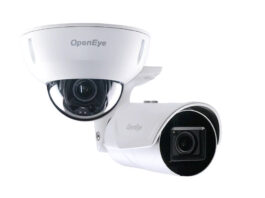UA professor of chemistry M. Bonner Denton holds the new technology that will allow the creation of pocket-sized explosive-detection devices. The new device is about 1,000 times more sensitive than the equipment currently used in airports to discern explosives. Rather than analyzing a swab from a person’s briefcase, the new technology could detect the traces of explosives left in air that passes over a person who has handled explosives. “This is a form of tricorder,” said M. Bonner Denton, the professor of chemistry at UA in Tucson who’s spearheading the new technology. Denton said combining such technology with a walk-through portal would make it simple to screen 100 percent of passengers. The new device can be pocket-sized. The analyzers currently used in airports are about the size of a table-top microwave oven. Denton, UA scientist Roger Sperline and Christopher Gresham and David Jones of Sandia National Laboratories in Albuquerque, N.M. are working on developing a hand-held analyzer capable of detecting small traces of explosives or illicit drugs. Such a device could be used at border crossings, Denton said. “This is more sensitive than dogs’ noses. It does not suffer from overexposure or a case of sinus. One can store it in the cabinet, then grab the unit, turn it on – and it’s running. And it tells you what material has been detected. Dogs just tell you something’s been detected.” Denton will talk about this and other portable detection instruments on Monday, March 14, at 2 p.m. Eastern Time (11 a.m Pacific Time) at the 229th American Chemical Society national meeting in San Diego. His talk, “Advanced Instrumental Technologies and Their Impact on Homeland Security and on Forensic Science,” will be given in Room 25C of the San Diego Convention Center. Detecting explosives or drugs means sorting through an environmental mish-mash of chemical signals to pick out the one chemical of interest. That’s what a drug-sniffing dog’s nose does – picks out the chemical signature of a drug from the chemicals that come from the dirty laundry, candy, food stains, fabrics, toothpaste and everything else inside someone’s luggage. To do the same thing to detect explosives, machines at airport screening stations use a technology called ion mobility spectrometry. Ions, or charged molecules, move when placed in an electric field. The speed at which an ion moves depends on its size and shape, so each ion has a characteristic speed. The airport analyzers snatch a collection of chemicals gathered from a person’s luggage, put those chemicals into an electric field and then search for any ion that has a speed that indicates “explosive.” The machine needs a certain number of molecules to accurately detect and identify a specific chemical. If there are very few molecules of a particular substance, the machine cannot distinguish that molecule from all the others in the mix. Denton realized that one place to improve detection was the electronics of ion mobility spectrometers. So he adapted circuitry originally developed for use in infrared astronomy. The new device, called a capacitive transimpedance amplifier, improves the readout circuitry in ion mobility spectrometers. “This change in readout electronics is key to the vastly improved sensitivity. It boosts the signal while lowering the noise,” Denton said. “This is the first radical change in ion detection since the 1930s.”
